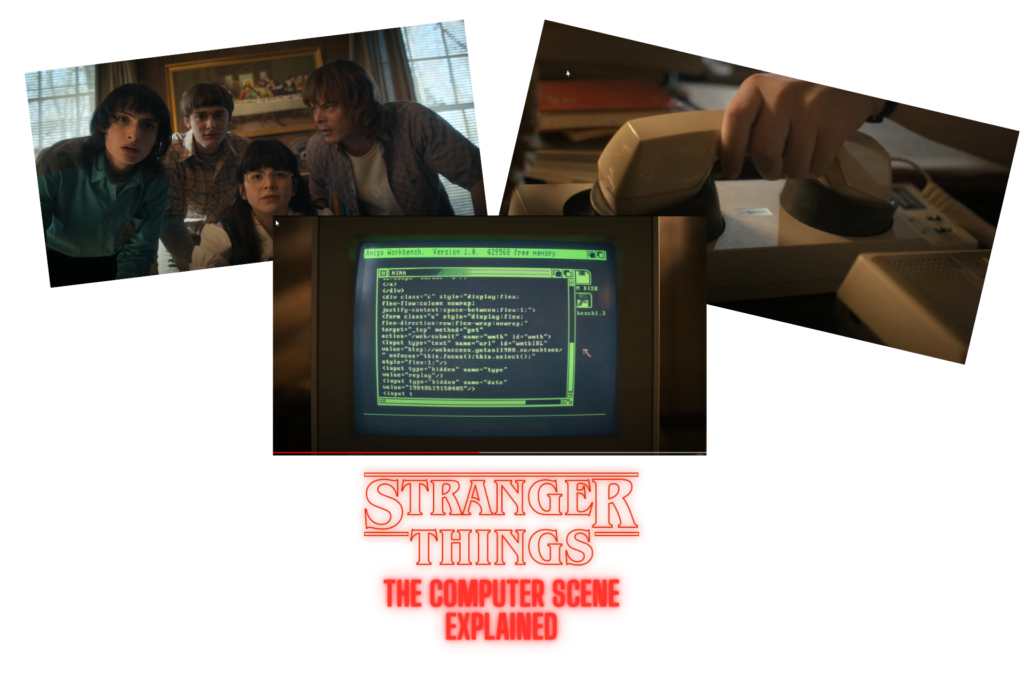In the spring of 2022 we saw the return of the Stranger Things Netflix series and our heroes facing new challenges. Once again we get to enjoy an episode that has a 1980’s computer scene . Like my last Stranger Thing blog posts, I had the opportunity to dig a bit deeper into areas that I thought I already knew and well…many on the internet in various threaded discussions.
If you watched Stranger Things Season 4, Episode 6, The Dive, you were reintroduced to Suzie, Dustin’s girlfriend who provides Will, Jonathan, Mike, and Argyle with some nerdy goodness computer help.
I would like to attempt to address the question: Did the computer code displayed on the computer screen exist in 1986 when this episode takes place?
The Scenario Behind This Part of Episode 6
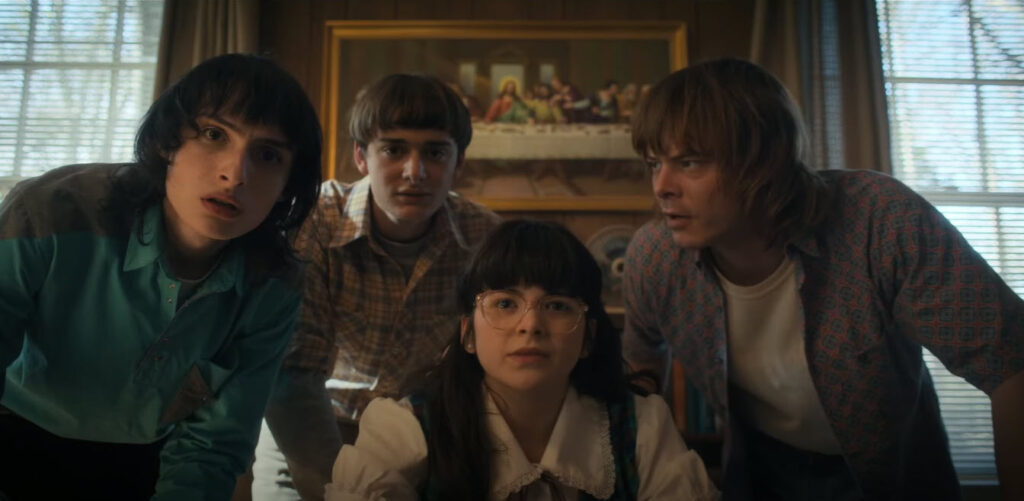
In Episode 5, The Nina Project, Will, Jonathan, Mike and Argyle are at a pay telephone where they dial the phone number provided by the government agent. When they dial it they hear the tones computers would use when another computer was “dialing in” as in, what Will notes, the movie “Wargames”. Recognizing it is a computer on the other end has them beginning to think about who can help them “hack” into it.
Their thoughts go to Suzie, Dustin’s computer whiz and super nerd girlfriend who appears in Season 3. They drive to her home where they use a Commodore Amiga 1000 computer and MODEM to dial-up the computer they called earlier and access computer files and get a map location to where they think their friend El (11) is located.
The Phone Number & Modem- Easter Egg
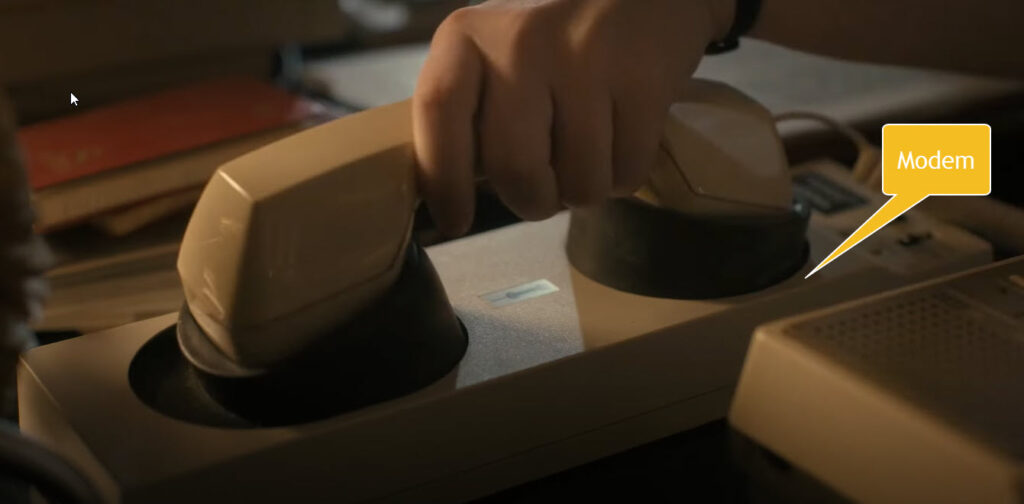
What Happens in Episode 6 - The Modem
The episode introduces a few items starting with the phone number. Suzie dials the telephone number and then places the phone receiver on the modem which then allows her computer to connect to the computer on the other end. The modem captures the “chirps and beeps” in the handset and sends it over the telephone lines where there is another computer modem translating it.
Have you dialed the number shown in the episode?
202-968-6161
If you dial this number you will hear an interesting Easter Egg.
What Happened in History - The Early Internet
The internet has its early foundation laid in the 1950’s during the President Eisenhower (yes, also the interstate highway started under his tenure as U.S. President) in order to create a redundant communication network in the event the U.S. was attacked using nuclear weapons. Since the home computing market didn’t surface until the 1980’s computers existed primarily in the U.S. government, large companies, and universities.
These three entities used the telephone network to transmit computer information. Since the telephone network used an analog signal and computers use digital signals, a device called a MODEM (MODulate-DEModulate) was needed to translate the signal from one to another and back. A computer user would have a phone dial a specific phone number where another computer would be ready to receive the call.
“Hand-shaking”, the chirping and beeping sounds, would take place between computers where they would establish the connection and then send the data.
Remember, the Internet still was NOT a thing where you stream videos, play video games, or search maps. None of that existed….yet.
Oh…also when you dialed up to systems back then, security was almost non-existent. That was why she was able to get into the files so easily. Different times indeed!!
The Screen and the Code
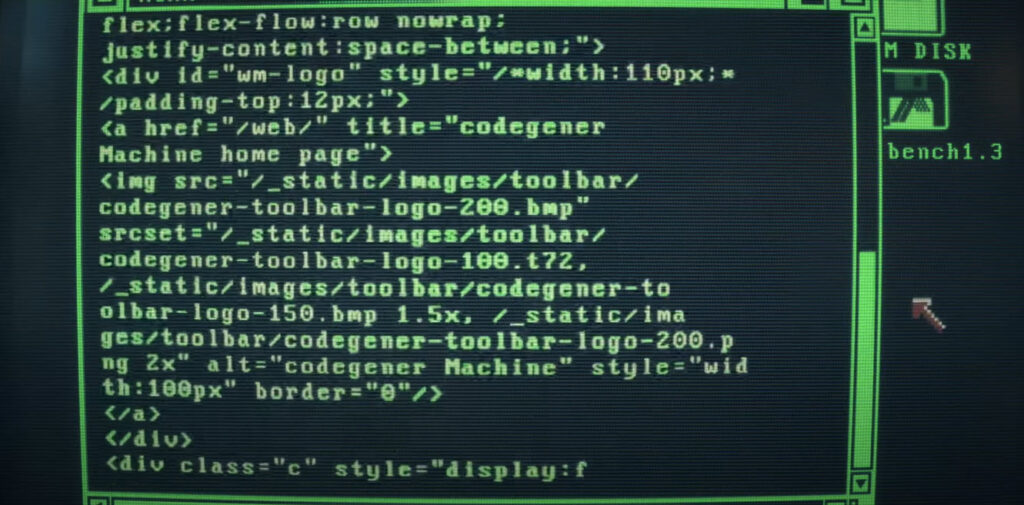
What Happens Next in Episode 6 - The Connection
Once Suzie connects to the source computer we see a green monochome display of a Graphical User Interface (GUI – pronounced Gooey) for the Commodore Amiga 1000. They open up a folder icon and that is when we see computer code scrolling on the screen.
The buzz in certain tech threads around the Internet is that the code you see on the screen was not created during the time-frame of this episode. Or was it???
The Commodore Amiga 1000
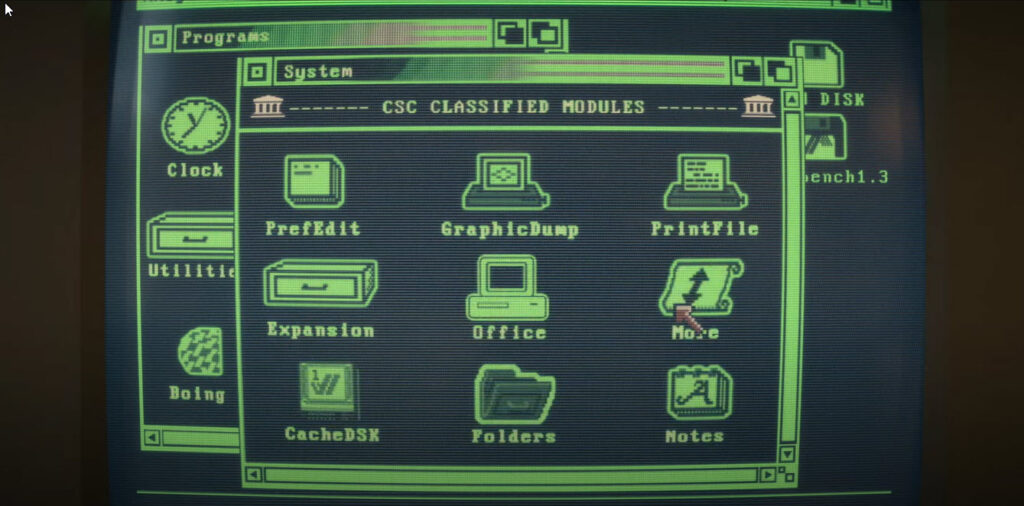
Once Suzie connects to the source computer we see a green monochome display of a Graphical User Interface (GUI – pronounced Gooey) for the Commodore Amiga 1000. They open up a folder icon and that is when we see computer code scrolling on the screen. The original Amiga had a monitor that was color (RGB) but I believe to give this a more retro feel, they went with a monochrome display.
The buzz in certain tech threads around the Internet is that the code you see on the screen was not created during the timeframe of this episode. Or was it???
What is the code?
The code appears to be HTML (Hypertext Markup Language), CSS (Cascading Style Sheets) and a little snippet of Javascript and it is building a webpage with a form on it. There are a few oddities in there though. If you are still new to coding, I explain “coding” here on this post.
- The form is showing CSS code which comes out in the 1990’s (see timeline below).
- HTSP is there which is part of a streaming video set of rules. This would not have existed quite yet.
- Get “Rick Rolled”. When you build an HTML form you give it a link as noted here. If you pull out this link someone has acquired the domain webacces.yutani1980.nu
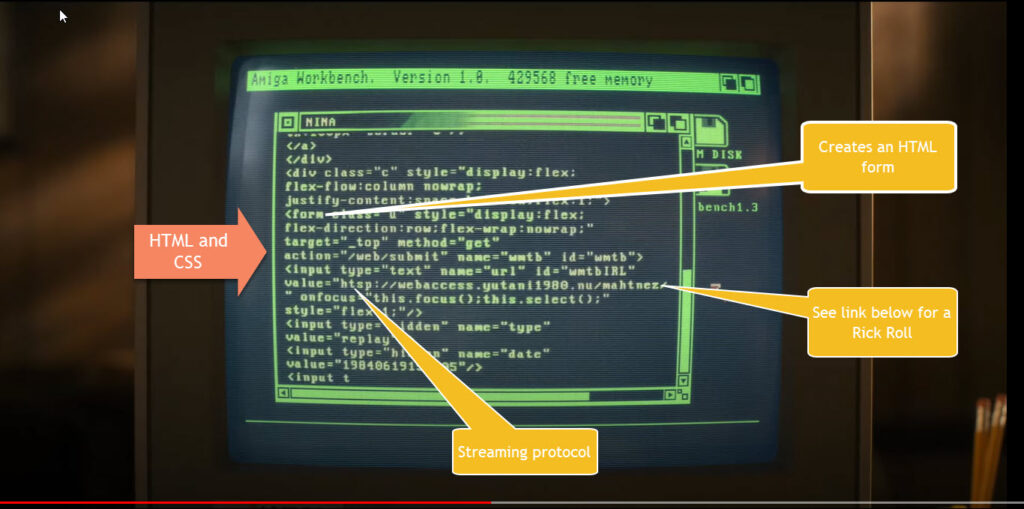
What the code appears to be.....
After some digging around and verifying a few things, I went over to the Internet Archive’s Wayback Machine webpage. Here you can search the web for webpages that existed years ago. You will see that not every website is archived but it is a fun way to look back at the web.
When you look for an archived Netflix Stranger Things webpage, you get some interesting results when you select VIEW SOURCE CODE from your Internet browser menu (or Windows RIGHT CLICK, view source code) .
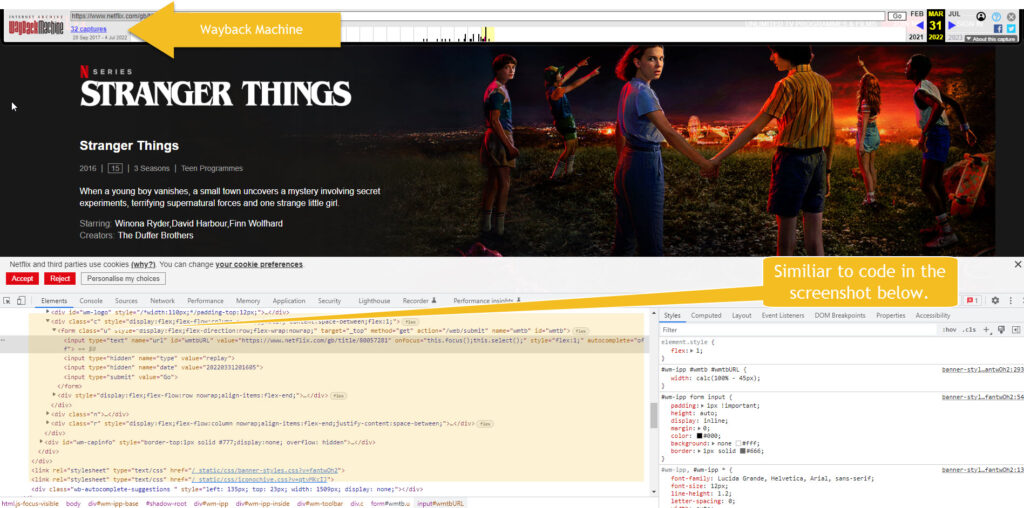
If you compare the Wayback Machine archive page source code above from 2016 and the code below that is flashed on the screen during the episode you will see similarities.
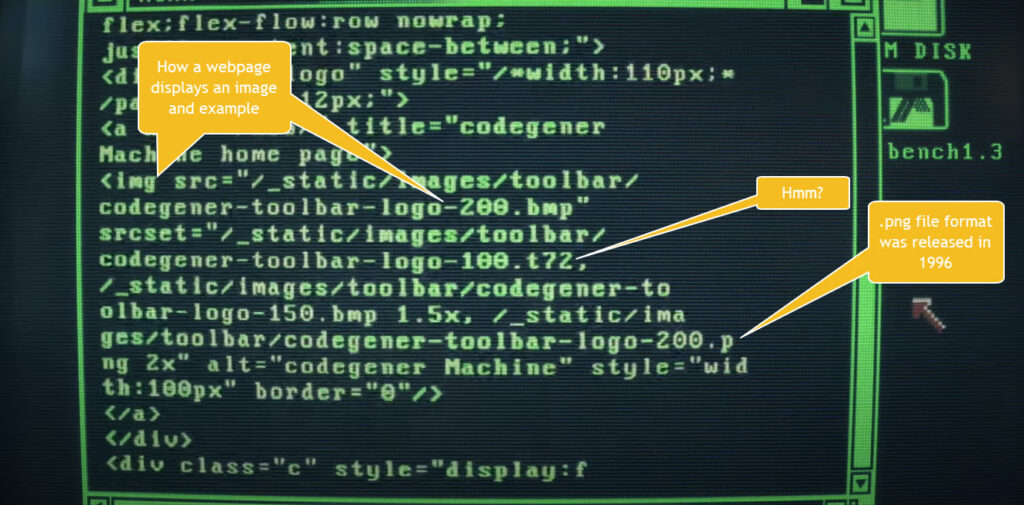
What Happened in History - The Early Web and HTML
Hypertext markup language (HTML), Cascading Style Sheets (CSS), and Javascript are the current foundation languages of the modern world wide web. The three combined produce code that is then read by our favorite web browsers. This question’s answer begins with knowing when markup languages were created.
Review the early web timeline below, use some of your sleuthing, and then maybe you can have the answer to this question!
IMPORTANT NOTE
Note at this point a markup language did exist in 1986 and it was used by the U.S. government.
Early Web Timeline
1940's
The Idea of an Internet
1970
IBM Creates GML (General Markup Language)
1980
Tim Berners Lee & Enquire
1986
SGML (Standard General Markup Language)
A standard was made of GML is 1986 by the International Organization for Standards (ISO) and named SGML (Standard Generalized Markup Language) https://isgmlug.org/a-short-history-of-sgml/ and would be used by large computing systems owned by the government and industry.
1989
The Memo
1990
HTML 1.0
Tim Berners idea come to life as Hypertext Markup Language (HTML) and a browser that can view it. These are not widely available. But by 1991 HTML surfaces as a world wide web language.
1993
The Mosaic Web Browser
Up to his point, the web was still a challenge to navigate for non-techies (and many techies). Mosaic was a graphical browser that made navigation simpler. It evolved into Netscape Navigator which played a significant role in the growth of the world wide web.
1994
CSS First Proposed
The shared documents lacked a consistent way to ‘format’ them. A CERN worker, Håkon Wium Lie, published a draft proposal of HTML Cascading Style Sheets which would allow formatting.
1995
Javascript was Invented
Created to enhance webpages, Netscape added a scripting language to the Netscape Navigator web browser. Brendan Eich and Sun Microsystems built the language.
What do you think?
So the argument can be made that this scene was not done with complete technical accuracy. But let’s compare a few things first and give some thought to all this:
- The dial-up MODEM. In 1983, I was using a dial-up MODEM and my Commodore 64 to access computers.
- Suzie’s Commodore Amiga 1000 came out in 1985.
- Computing networks existed before this episode but ARPANET, an advanced projects government agency, is given credit for creating the internet in 1983.
- Markup languages were present throughout the 1980’s but only in select locations.
Where things go off the tracks is with the code and slight tech issue.
- HTML and early markup languages did exist in higher education and research but this version used here did not unless it was held secretively (sorry…didn’t mean to head into a conspiracy).
- .PNG which is also used in the code shown here wasn’t prime time until 1996.
- The Commodore Amiga 1000 had a color (RGB) display which was one of the main features of that model. Why go monochrome?
Regardless of whether or not this code existed back in 1986 doesn’t matter to me. It is always fun and inspiring to see tech appear in pop culture and have us explore it a bit deeper. It always gives us a chance to learn. I am looking forward to seeing more of vintage tech used in shows like Stranger Things and I hope you do to!
If you have scenes from movies or television shows that showcase your favorite vintage tech, reach out to me at the GetMeCoding.com webpage or visit GetMeCoding on Facebook and Instagram.
Happy coding!!
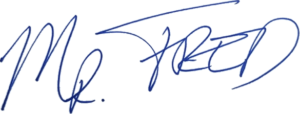
Mr. Fred
Let Me Help You

If you are a teacher or someone looking to help others learn to code, let me help you.

